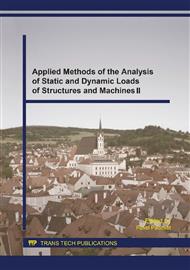[1]
K. Polozhiy, P. Reiterman, M. Keppert, MSWI Bottom Ash as an Aggregate for a Lightweight Concrete, Advanced Materials Research 1054 (2014) 254-257.
DOI: 10.4028/www.scientific.net/amr.1054.254
Google Scholar
[2]
O. Zobal et al., Analýza betonu z tělesa přehrady Orlík po padesáti letech, Beton TKS 02/2014 (2014) 28-34 (in Czech).
Google Scholar
[3]
M.J. McCarthy, R.K. Dhir, Development of high volume fly ash cements for use in concrete construction, Fuel 84 (2005) 1423-1432.
DOI: 10.1016/j.fuel.2004.08.029
Google Scholar
[4]
A. M. Neville, Properties of concrete. New York, ISBN 0-582-23070-5, (2009).
Google Scholar
[5]
ČSN 73 1322: Stanovení mrazuvzdornosti betonu, Praha, 1969 (in Czech).
Google Scholar
[6]
J. Dohnálek, Vliv mrazuvzdornosti betonu na jeho povrchové úpravy, In: Beton – technologie, konstrukce, sanace, 03/2012 (2012) 44-47, ISSN 1213-3116 (in Czech).
Google Scholar
[7]
ČSN 73 1326: Stanovení odolnosti povrchu cementového betonu proti působení vody a chemických rozmrazovacích látek, Praha, 1985 (in Czech).
Google Scholar
[8]
ČSN 73 1380: Zkoušení odolnosti betonu proti zmrazování a rozmrazování - Porušení vnitřní struktury, Praha, 2007 (in Czech).
Google Scholar
[9]
P Cirkle and O. Pospíchal, Nový způsob stanovení mrazuvzdornosti betonu s využitím metod pro sledování poruch struktur, In: Beton – technologie, konstrukce, sanace, 03/2011 (2011) 56-61, ISSN 1213-3116 (in Czech).
Google Scholar
[10]
T. Plachý et al., Influence of freeze-thaw cycles on mechanical properties of gypsum determined using the impulse excitation method, Applied Mechanics and Materials 486 (2014).
DOI: 10.4028/www.scientific.net/amm.486.353
Google Scholar
[11]
W. Berg et al., Příručka – Popílek v betonu – základy výroby a použití, ČEZ Energetické produkty, s. r. o., 2013, pp.82-86, ISBN 978-80-260-4226-6 (in Czech).
Google Scholar


